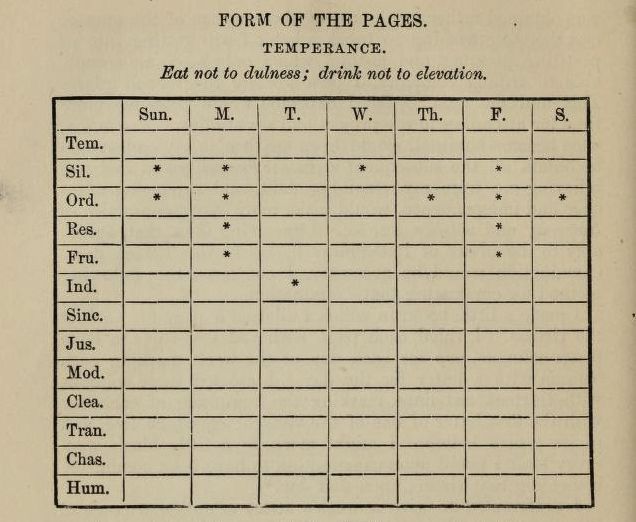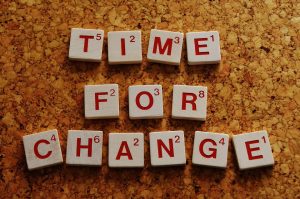NAPO Member, Jan Lehman shares her “10 Weeks of Productivity” during NAPO GO Month. #GOMonth2018

In order to be productive, it’s important to understand what productivity means at its roots. Over the next 10 weeks, we are going to define productivity by breaking it down into the 10 most effective actions practiced by highly productive professionals.
Before we start with this week’s topic, here are some basic productivity concepts to get you started on your path to a more productive workday.
Productivity is about quality and value, not quantity and volume.
Productivity relates to the accomplishments in your day that have meaning and purpose.
Productivity is about achieving an end result that possesses integrity and value.
Productivity is about maximizing your most important resources: Time, Technology and Talent.
Productivity is about giving you more time and energy for the people and activities in your life that bring you joy.
Over the next 10 weeks, we’ll take a deeper look into the following topics leading you to optimal productivity. Let’s get started!
WEEK 1: DEFINE YOUR ISSUES AND GOALS
GOT ISSUES
Let’s face it. You’ve got issues. We all do. Whether you’re the CEO of a multi-million dollar corporation or a part-time employee of a non-profit organization, you have things that could be running more smoothly. Now that we have that out in the open, let’s figure out just what those issues are, and how they’re impacting your productivity.
DEFINE “DEFINE”
Defining your issues isn’t as simple as it may seem. It’s easy to point fingers at the people and processes that slow us down, but are they the real problem? I recently had a client (we’ll call him Bob) come to me with an issue. His employee (we’ll call him Joe) had an email problem. Joe just couldn’t seem to respond to email in a timely manner. His inbox was always overflowing, and requests were piling up. Bob hired me to coach Joe on how to manage his email more efficiently.
After spending several hours of Joe’s day walking through email management efficiencies, I was enlightened to find that Joe knew perfectly well how to manage his inbox. Email wasn’t Joe’s issue. Bob had failed to define the issue.
After taking a step back and observing Joe carry on with the to-dos of his day, the issue became strikingly clear. Joe, like so many others, had a time management issue. It wasn’t that he didn’t understand how to keep his inbox tamed; he simply didn’t have the time and hadn’t made it a priority.
QUIZ TIME
What did we learn about defining the issue?
A) Bob is a bad boss and should be demoted.
B) Joe is lazy and stupid.
C) Don’t assume the nature of an issue without investigating.
I hope you responded with C. Defining the issue can be just as much of a process as solving it, which is why this step is crucial. A wrongly stated issue can lead to even bigger problems, like hours spent on the wrong priorities, less revenue-impacting hours worked and even jobs lost.
We must become (or find others willing to become) explorers, observing the daily routine of ourselves and our employees, like cheetahs in the wild. Stand back, be quiet and let nature take its course. Amazing discoveries and insights are made at this stage, including defining the real issues.
GOALS AREN’T JUST FOR HOCKEY PLAYERS
Like defining the issues, discovering and mapping out clearly defined goals is an integral aspect of optimal productivity. Because there are numerous accessible resources on mapping out goals (think S.M.A.R.T goals), we won’t get into that now. Rather, I want to emphasize the importance of having a goal as the focus of each and every day.
Not only does having a goal force you to think about what your most important and impactful work is, but it also gives you a grand sense of accomplishment when you actually achieve your goal. Taking pride in your work and feeling a sense of accomplishment are significant characteristics of highly productive individuals.
WHAT’S TOMORROW’S GOAL?
Because I’m in the business of productivity, it would be intrinsically wrong for me to advise you to spend the first (and often the most productive) part of your day defining your goals for that same day. Instead, take a few moments at the end of your workday to identify your goals and priorities for the next day. These would be your short-term goals, like completing a particular project, responding to a defined number of emails or even just making it home on time to have dinner with your family or get in a good workout. Starting your day with a goal in mind, and not having to spend your most focused time deciding how to attack your workload is an immense time saver!
LONG-TERM GOALS
Ultimately your short-term goals will get you to your long-term goals. If your goal is to get promoted in the next 12 months, but you’re always behind on projects because your time is spent on meetings and email, you’re probably missing short-term goals. Taking the time to clearly define your goal for each day will lead you to accomplishing those long-term goals.
Of course, things happen and goals can shift and change as each day progresses. Don’t let that throw you off course. Take a deep breath and 5 minutes to re-evaluate what your plan of attack is.
As you work through defining your issues and goals, remember it takes time, but it saves more time in the big picture. Most importantly, don’t let your most valuable work fall to the wayside because of poorly defined or undefined goals and issues. Once the discovery is made, you’ll be amazed at how much more value and meaning will come out of your accomplishments and how impactful you can be!
The tragedy of life doesn’t lie in NOT reaching your goal. The tragedy lies in having NO GOALS to reach. – Benjamin Mays

Was one of your resolutions for 2018 to get more organized? If so, you’re in good company. Getting organized is among the most popular New Year’s resolutions.
Even if you didn’t expressly resolve to get more organized, you may have done so without realizing it via your other resolutions. This is because organization is key to success with so many goals.
Say for example that you resolved to spend more time with family, or achieve a fitness goal, or tackle debt. Being more organized means that you can gain time to enjoy family. Fitness goals are more attainable when you have fewer barriers between you and your workout – if it’s hard to find those workout clothes, it’s that much easier to throw in the towel and not work out.
If your goals are financial, an organized mail and paper management system can be like found money. You can pay down debt instead of paying late fees after you finally come across that overdue bill. Organization really is crucial to achieving most goals.
Resolutions are easy to make and all too easy to break. New Year’s resolution expert John Norcross found that 25% of us don’t stick with our New Year’s resolutions past the first week. If you are still on track with your New Year’s resolution, kudos! If not, now is the perfect time to reset.
Resetting your resolution may be as simple as breaking it down into small steps. Have you written down your resolution? If not, try that. People who write down their goals have been found to accomplish significantly more than people who don’t. It may be a matter of reworking your resolution so that it’s S.M.A.R.T. (Specific, Measurable, Achievable, and Relevant / Realistic, and Time-bound).
Change that involves organization can be hard for the best of us no matter what strategies we try. If this sounds like it applies to you, you’re still in good company.  Consider that Benjamin Franklin made a chart of 13 “virtues” to which he aspired. Order was the one he struggled most with, according to the chart he included in his Autobiography. He would put a mark on those days when he did not achieve the virtue, and there are more marks for order than for any other virtue.
Consider that Benjamin Franklin made a chart of 13 “virtues” to which he aspired. Order was the one he struggled most with, according to the chart he included in his Autobiography. He would put a mark on those days when he did not achieve the virtue, and there are more marks for order than for any other virtue.
If you can relate to Franklin’s struggles, consider an option that didn’t exist in Franklin’s day: hire a professional organizer!

For many, a New Year brings new ideas, new wishes and renewed hope. Maybe you’ve thought about getting organized but haven’t acted on it.
Getting organized takes some courage. The courage to take actions that result in change. It may take many steps – baby steps. But every step counts!!
Maybe you’ve had nagging thoughts. These thoughts become annoying or stressful. They sound like:

Sound familiar?
Let me help you imagine what can follow next.
First, you recognize that you’re having these thoughts. Being conscious causes awareness in the present. You are very Present! This is the first baby step you take.
You realize you want support. You take time to find the “right ” person who will help you get the job done. You inquire by asking others, searching the internet, or hiring a Professional Organizer – more baby steps.
Each baby step demonstrates your courage and adds up.
Even though it feels uncomfortable, you finally decide to reveal the secrets and feelings that are challenging – with courage.
You clear time in your busy schedule and make appointments to organize. You work hand in hand at the scheduled appointment, staying open to guidance and suggestions. You make decisions during the session, and even surprise yourself! Purging items you never thought you could, or would. You let the items go, out of your possession. Some that same day!
At this point you feel pleased with your progress, and the results from your hard work. You experience a sense of accomplishment, freedom, aliveness, motivation, peace. You commit to more work days and see a clearer space and vision for yourself.

All the baby steps have accumulated to cause a personal transformation – within yourself and your space!
Congratulate yourself, it doesn’t matter how long or what it took to get to this point. Take a moment, breathe, and BE. You have earned it!
Who likes change and welcomes it? Most of us fear the unknown, even avoid it. Well, getting organized is a process of change. And, as growth is a byproduct of change, by embracing this change you are embarking into new possibilities of growth. Remember, with every step of the process, change occurs externally and internally.
“Change always comes bearing gifts” Price Pritchett
This year’s Philadelphia Home Show has a theme of “Small Spaces”. With the recent trend of Tiny Homes, this theme seems a perfect fit. Besides, many residents of Philadelphia and its surrounding areas, without ever opting into the Tiny Home movement, have been faced with the challenges of tight spaces for decades.
At the show, visitors will get a chance to browse the latest home design concepts and  products. They can also get professional home improvement tips from presenters like Tyler Wisler from HGTV’s Design Star and Kevin O’Connor of This Old House. And, if that’s not reason enough to weather the cold, I will be joining several of my fellow Productivity & Organizing Professionals (NAPO) who will also be sharing their own tips, tricks and secrets for managing your spaces and living a clutter-free life.
products. They can also get professional home improvement tips from presenters like Tyler Wisler from HGTV’s Design Star and Kevin O’Connor of This Old House. And, if that’s not reason enough to weather the cold, I will be joining several of my fellow Productivity & Organizing Professionals (NAPO) who will also be sharing their own tips, tricks and secrets for managing your spaces and living a clutter-free life.
When it comes to busy lives and challenging spaces, organization and creativity are key. The more you are able to implement systems that address the challenges of your cramped space, the more freedom and control you will begin to feel. Imagine yourself having all your supplies neatly arranged and tidily stored so that there is no searching, digging, shuffling or juggling – each time you need them. Think of how quickly and easily you could come and go, with nary a look back, confident that all you are walking away from is in order. Ahhhh, the peace of it.
However, like the physical foundations our homes are built upon, a free and organized life needs a foundation in order to be sustainable. Sometimes this means adding organizational products in order to create a “home” for the items we use. Sometimes it means removing unnecessary excess from the environment. And, it almost always means having a set of basic foundational rules in place so that patterns can be formed and replicated.
So come on out! View the new trends and home solutions, attend a presentation or two and bring your own unique organizing challenge to an “Ask the Organizer” session to get personalized advice from a NAPO-GPC professional organizer!
WHEN: JANUARY 12–15 & 19-21, 2018
WHERE: PENNSYLVANIA CONVENTION CENTER, PHILADELPHIA, PA
January is a time of beginnings – new year, new resolutions, new choices. Make 2018 YOUR year to conquer clutter chaos and gain control of your house!
I define clutter as anything that takes up space without serving any real purpose in your life. That simple statement helps my clients decide what to keep or let go. Clutter looks and feels different to everyone. It causes stress and a somewhat-to-completely-overwhelming, chaotic and sometimes unhealthy environment. It’s a daily negative reminder, conscious or unconscious, of tasks left undone.
Over time, storage areas like closets, basements and garages become stuffed. Therefore, things that should be in storage areas overtake living spaces. There are personal costs like stress, time wasted searching for things and money wasted rebuying things you can’t find or forgot you have.
It’s time to reclaim your space. Start with decluttering.
Decluttering is just the first step before organizing takes place. To be organized, among other things you need a strategy as to where everything that remains will be placed, systems that work for you, organizing principles and new habits, all of which work with your situation, personality and preferences, and maintenance techniques.
Some people are held hostage by their stuff. They hold on to things long after they’ve outlived their usefulness due to sentimental reasons, packrat tendencies, monetary value, so-and-so gave it to them or “I might need it someday.” Unused things displace things that are used.
Some of my clients have 30-year-old wedding presents in dusty, never-opened boxes on basement shelves. I ask, “WIll you use it.” “No.” “Do you like it?” “No.” “Can you get rid of it?” “No.”
As an organizing consultant, I know it’s not about just getting rid of things. It’s about the person, not the stuff. Often there are underlying psychological reasons. I dig deeper to help my clients understand WHY they’re keeping unwanted stuff. I offer safe ways to let go without losing connections to things.
Once clutter is conquered, calm replaces chaos and your home reflects how you want to live. Sound amazing? It is! Contact a professional organizer if you’d like help.
 Have you ever gotten to the end of your day wondering what (if anything) of value you actually accomplished? If so, it may be time to pull out the 80/20 Rule!
Have you ever gotten to the end of your day wondering what (if anything) of value you actually accomplished? If so, it may be time to pull out the 80/20 Rule!
Professional organizers often apply the 80/20 Rule (a.k.a., the Pareto Principle or the Law of the Vital Few) to decluttering. For example, in a closet, determine the 20% of clothes you wear 80% of the time, purge the 80% of clothes you seldom or never use, and – voila! – you have space for clothes more like your favorite few.
The principle also applies to time. Most of us accomplish 80% of our best work in just 20% of our time, and fritter away 80% of our time doing…what? The key to really accomplishing our goals, to really making an impact, is to focus on the 20% of things we are really good at.
Determining our best 20% when it comes to clothes is pretty straightforward: pull everything out of the closet and start sorting: things I love (or not), things that fit (or not), things that make me look great (or not), etc.
But how do we determine our best 20% when it comes to work? Claire Diaz-Ortiz, in the book Design Your Day, suggests this similar pull-out-and-sort activity to find out:
First, get two pieces of paper. At the top of one write “Big Wins” and on the other write “Activities.”
On the “Big Wins” paper, list things that you’ve done in the past few years, personally or professionally, that have brought you the greatest joy, that have made you feel most alive, that have made you feel like you were in the sweetest of sweet spots. These could be things that happened just once, or continuing things.
On the “Activities” paper, list absolutely everything you do on a regular basis – fun or not fun, significant or not significant, necessary or unnecessary, whatever. Then sort these items into three categories: Things Only I Can Do, Things Someone Else Can Do, and Things I Should Stop Doing. (It might help to rewrite your activities on a fresh piece of paper with three columns headed with these categories.)
Next, cross-check. Things that appear on both your “Big Wins” list and your “Things Only I Can Do” list are your best 20%!
Now, set priorities:
As Diaz-Ortiz says, “ultimately, this activity is a mind-opening way to see where your time and work is really moving the needle and where you’re just running on the hamster wheel to stay busy.”
Let 2018 be the year where you focus on the few vital tasks that best get you to where you want to be.
80/20 your 2018!